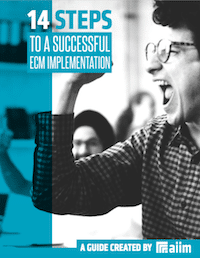The AIIM Blog
Keep your finger on the pulse of Intelligent Information Management with industry news, trends, and best practices.
Enterprise Content Management (ECM)
1. Look at New Approaches to Software Acquisition Back at the turn of the century (yes, we mean the late 1990s...), there was but one way to acquire a content management product to meet enterprise document or records management needs. We bought per-seat or per-server licenses that shipped on CD from the software vendor, crossed our fingers that we budgeted for enough seats or connections for key employees, all while hoping that the vendor roadmap delivered the fixes and features we quickly realized were missing. In 2010 things are different. The options to acquire ECM software have changed dramatically, offering a far richer range of choices to serve customer needs—not just those of the vendor. Open source and Software-as-a-Service (SaaS) are two new approaches that put power back into the hands of the enterprise. Simple, clear online downloads or subscription sign-ups via the web cut through the red tape of license keys, the endless sales cycle theatrical negotiations, and lets your team get started on an ECM project today.
Share
Enterprise Content Management (ECM)
1. You Can Get Started on an ECM Project – NOW. Need to get an ECM project moving now--even if you don't have much budget today? Open source ECM offerings let companies get started with early requirements research, prototyping, and piloting just with a simple download and installation. In the spirit of community, of transparency, of truly believing that ECM is a critical platform for any customer in the 21st-century knowledge economy, open-source ECM vendors actually want you to get moving forward on a project.
Share

Making an ECM implementation successful requires planning and attention to detail. The best way to create the right solution is to identify organizational goals and priorities. Learn how to manage a successful implementation in our free guide.